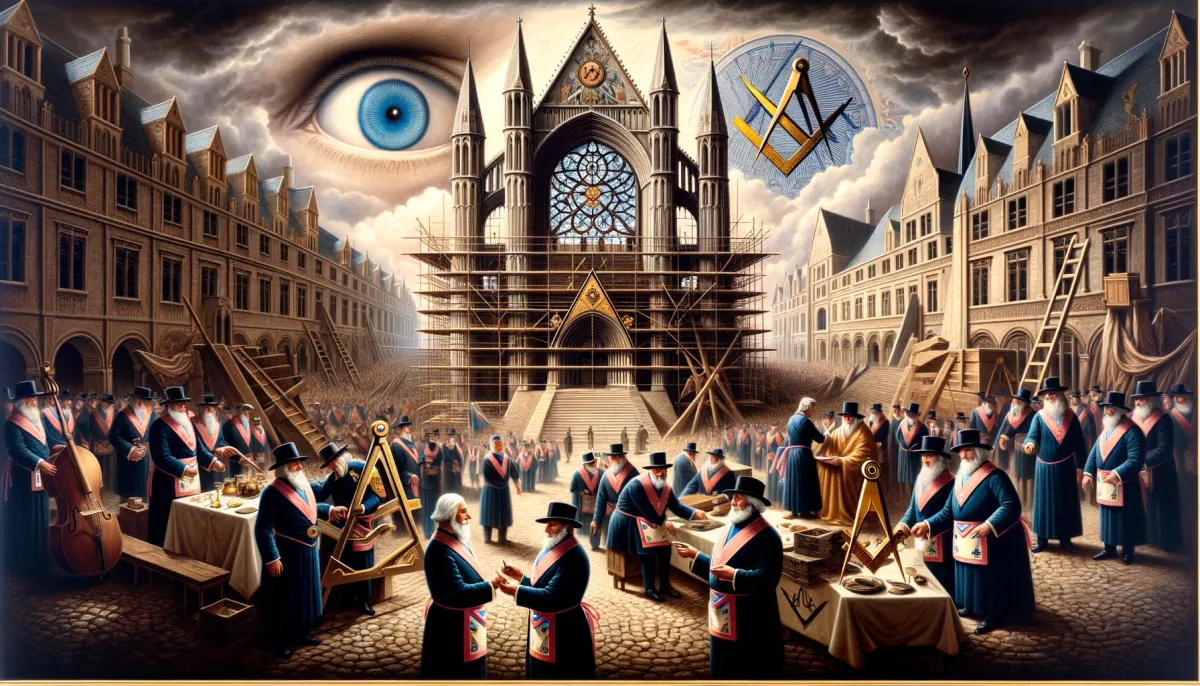Freemasonry: A Journey Through Time and Influence

Freemasonry, often cloaked in an aura of mystery and intrigue, has been a source of fascination for centuries, stirring imaginations and debates alike. This fraternity, with its enigmatic origins and significant impact on society, weaves a tapestry of history, philosophy, and symbolism. In this article, we explore the labyrinthine paths of Freemasonry, from its shadowy beginnings to its profound influence on the world stage.
Unveiling the Origins
The true genesis of Freemasonry is a puzzle wrapped in historical enigmas. Theories abound, ranging from the medieval stonemasons' guilds to enigmatic ancient rites. Yet, the consensus is that Freemasonry sprouted from the skilled guilds of the Middle Ages. These guilds, architects of Europe's grandest cathedrals, were keepers of secret knowledge in architecture and masonry, disseminating their expertise through tightly held rituals and apprenticeships.
The Dawn of Modern Freemasonry
The transformation from operative masonry to speculative masonry marks Freemasonry's modern inception. This pivotal shift is traced back to the formation of the first Grand Lodge of England in 1717, a watershed moment that unified four London lodges. This fusion birthed a structured organization with rituals steeped in Enlightenment values like reason, equality, and brotherly love.
Freemasonry's Global Tapestry
Freemasonry, originating from England, rapidly fanned out across Europe and the Americas. It magnetized intellectuals, statesmen, and influential personalities, forming a transcultural network. Freemasons were instrumental in historical landmarks, such as the American Revolution, with several Founding Fathers being Masons.
The Enigma of Symbols and Rituals
Freemasonry's essence is captured in its rich symbolism and rituals. The square and compasses, its most emblematic symbols, signify moral and ethical guidance. The all-seeing eye, another iconic symbol, represents divine oversight and is famously depicted on the U.S. dollar bill. This inclusion is often linked to the Masonic ties of some founding figures, although it also symbolizes the eye of Providence.
Masonic Hierarchy and Degrees
Freemasonry's structure is a mosaic of lodges, each autonomously operating under a Grand Lodge. There are several degrees of initiation, with the primary ones being Entered Apprentice, Fellowcraft, and Master Mason. Higher degrees, such as in the Scottish Rite or York Rite, offer deeper teachings and rituals.
Controversy and Impact
Freemasonry's role in society is significant, championing values of liberty, equality, and fraternity. However, its secretive nature has sparked suspicions and conspiracy theories. Despite these, the fraternity's real influence lies in its philosophical and cultural contributions.
Legends Among Freemasons
Freemasonry's history is dotted with illustrious figures who have left their mark on the world. From George Washington's leadership principles to Benjamin Franklin's diplomatic and scientific prowess, each Mason brought a piece of Freemasonry into their achievements. Figures like Winston Churchill, Wolfgang Amadeus Mozart, and Voltaire embodied Masonic ideals in their respective fields, reflecting the fraternity's broad appeal and influence.
Conclusion: A Legacy of Intrigue and Inspiration
Freemasonry stands as a complex, multifaceted organization, with its secrets and teachings closely guarded. Yet, its imprint on history, philosophy, and culture is unmistakable. Whether perceived as a benign brotherhood or a cryptic cabal, Freemasonry remains an endlessly captivating subject, its legacy intertwined with that of remarkable individuals who have shaped our modern world. As a fraternity that transcends time and borders, Freemasonry continues to intrigue, influence, and inspire, playing a unique role in the tapestry of human history.



Comments ()